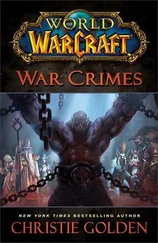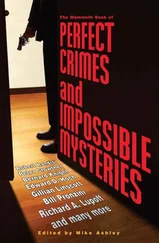The Khmer Rouge became a killing machine of frightening proportions. In just under four years, an excess of 1.7 million Cambodians died under the regime of Pol Pot and his Khmer Rouge. In Tuol Sleng, alone, an estimated 17,000 people were executed.
On arrival at the detention centre, the prisoners were photographed and forced to give personal information. All their possessions were removed and they were ordered to remove all their clothes. They were then taken down to the detention cells, where they were shackled to the walls. In the larger cells, where as many as 50 to 100 prisoners were held, they were collectively shackled in leg irons to long pieces iron bar. There were no beds so the prisoners were forced to sleep on the concrete floors, and there was just one solitary latrine box. Food was served twice a day at 8.00 a.m. and 8.00 p.m. and consisted of two or three tablespoons of rice porridge but nothing to drink. Every few days the guards would hose the prisoners down but the insanitary conditions led to sickness and skin diseases. Many people died during the night and guards would come each morning and take the bodies away.
From the moment of detention the captives had to adhere to a strict set of rules, which were pinned to a notice board outside the cells, written in both Khmer and English. These rules, ten in total, dictated how they could act, how they had to respond to questioning and how, in fact, they had to accept the fact that they were traitors and would be treated as such.
THE SECURITY REGULATIONS
1. You must answer accordingly to my questions – don’t turn them away.
2. Don’t try to hide the facts by making pretexts this and that. You are strictly prohibited to contest me.
3. Don’t be a fool for you are a chap who dare thwart the revolution.
4. You must immediately answer my questions without wasting time to reflect.
5. Don’t tell me either about your immoralities or the essence of the revolution.
6. While getting lashes or electrification you must not cry at all.
7. Do nothing, sit still and wait for my orders. If there is no order, keep quiet. When I ask you to do something, you must do it right away without protesting.
8. Don’t make pretexts about Kampuchea Krom in order to hide your jaw of traitor.
9. If you don’t follow all the above rules, you will get many lashes of electric wire.
10. If you disobey any point of my regulations you shall get either ten lashes or five shocks of electric discharge.
The methods of torture were both cruel and barbaric. Prisoners were forced to confess by using battery-powered electric shocks, searing hot metal prods or knives or having their head constantly ducked under water. Outside in the prison courtyard was a wooden frame that was once used by gymnasts, which the Khmer Rouge had converted into gallows. The majority of the prisoners were innocent, but the Khmer Rouge main objective was to extract whatever confession they felt was suitable. Although many of the prisoners died from the severity of the torture, the plan was not to kill them before they extracted the necessary information. The dubious nature of these confessions mattered little to the Khmer Rouge who built up a massive dossier of names allowing them to prove to themselves that there was indeed a massive web of traitors against them.
After the prisoners were interrogated, they were taken along with their family to the Choeung Ek extermination centre just outside Phnom Penh. Here, they were killed by being battered with iron bars, pickaxes, machetes and other forms of makeshift weapons. It was rare for a prisoner to be shot because the Khmer Rouge considered bullets to be a precious commodity to waste on their contrived traitors. Mass graves containing 8,895 bodies were discovered at Choeung Ek after the fall of the Khmer Rouge regime. Many of the dead were former inmates in the Tuol Sleng prison.
Today thousands of these confession files have been uncovered, including 5,000 photographs that give an insight into the brutal and inhumane treatment of prisoners at the hands of the Khmer Rouge. Out of the approximate 17,000 prisoners taken to Tuol Sleng, there are only seven known survivors. These men were kept alive because the Khmer Rouge believed they had special skills. One survivor, Vann Nath, who had trained as an artist, was put to work painting pictures of Pol Pot. After his internment, Nath continued to paint 15 scenes, including a self-portrait, which depicted the harsh realities of life and death at the detention centre.
THE FALL OF THE KHMER ROUGE
While the Khmer Rouge were intent on destroying what remained of the Cambodian society, there were stirrings of unrest with their old enemy, Vietnam. Although it was expected that the two new communist governments of Vietnam and Cambodia would eventually come to some kind of political agreement after years of conflict, their hatred and mistrust of each other ran too deep. Pol Pot, who showed signs of having an inferiority complex as far as the Vietnamese were concerned, was concerned that his neighbours were about to attack Cambodia. He decided to make a pre-emptive assault by invading Vietnam and looting the villages that were close to the border. The Soviet Union had ceased supporting Cambodia as soon as Pol Pot came into power; however, without their aid, China and the USA stepped in and pledged their support to the Khmer Rouge.
In 1978, Vietnam amassed thousands of troops along the border with Cambodia. At the same time, a friendship treaty was signed between Vietnam and the Soviet Union, which was a direct result to Cambodia’s now close relationship with China. On Christmas Day, 1978, 100,000 Vietnamese troops poured across the border, and they quickly gained a strong foothold in the north-east of Cambodia. Within a matter of weeks the Vietnamese had managed to capture Phnom Penh and forced the Khmer Rouge to flee. Pol Pot, himself, escaped by helicopter as the Vietnamese took control of the city.
As order started to return to Phnom Penh, the Vietnamese formed a new government known as the People’s Republic of Kampuchea (PRK), led by a young prime minister by the name of Hun Sen. Despite the inborn fear of Vietnamese domination, many defectors of the Khmer Rouge helped to form the core of the new government.
Relieved that the harsh rule of the despotic Khmer Rouge was over, hundreds of thousands of Cambodian families started the long march home in the hope of finding some of their relatives. In most cases, however, they returned to find that nothing was left of their former lives – no homes, no possessions and, most tragically, no family. In reality, the Khmer Rouge came close to their dream of eradicating all memories of the old Cambodia. The country had literally been turned upside down by the Khmer Rouge years, and the new government had the daunting task of trying to not only heal the mental and physical wounds, but also rebuild the country economically.
NO CHANCE FOR WAR CRIMES TRIBUNAL
Owing to the fact that neither Pol Pot nor any of his followers were ever held accountable for the atrocities committed during his years in power, the weight of their crimes fell on the last of the Khmer Rouge leaders, General Ta Mok. Although Hun Sen permitted many of the high-ranking Khmer Rouge officials to return to Cambodian society without any form of recrimination, he decided that Ta Mok, nicknamed ‘The Butcher’, was to be the scapegoat. He was arrested on 6 March, 1999, in an effort to make him pay for the sins of the Marxist excesses. Ta Mok was regarded by many people as the most brutal of all the Khmer Rouge leaders, and he was known to have played a key role in a series of massacres and purges. He was the leader of the forces that destroyed the former royal capital of Oudong in 1974, killing many officials and government soldiers and forcing thousands of citizens to leave their homes.
Читать дальше












